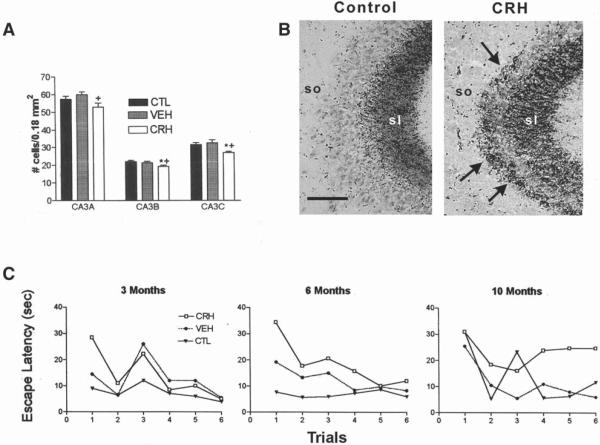Fig. 4.
CRH administration to neonatal rats reproduces the structural and functional hippocampal deficits induced by early-life stress. (A) Cell numbers in subregions of the CA3 pyramidal-cell layer from CRH-treated, vehicle-treated, and naive controls were determined at age 12 mo. One-way ANOVA with Tukey's multiple analysis indicated significant (p < 0.05; *vs naive; + vs vehicle-treated) neuronal loss in CRH-treated rats in all CA3 subregions at 12 mo of age. (B) Sections of CA3A pyramidal cell regions from vehicle- and CRH- treated rats (sacrificed at 12 mo), subjected to Timm's stain for visualizing the high zinc content of mossy fiber (axons of the CA3-innervating granule cells) terminals. In CRH-treated rats, these terminals were abnormally abundant within CA3 stratum oriens (so). (C) CRH-treated rats show a trend toward impaired performance (increased escape latency) using the Morris water maze at age 3 mo. By 6 and 10 mo, rats treated with CRH early in life take significantly longer to locate the hidden platform (two-way ANOVA, treatment effect at 6 mo: F2,132 = 9.62, p < 0.001; at 10 mo; F2,132 = 5.53, p < 0.01). sl, stratum lucidum. Scale bar = 50 μm. These data are modified and reproduced from (ref. 23).

